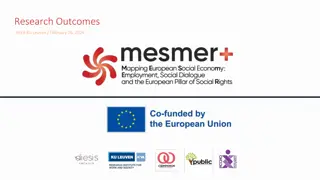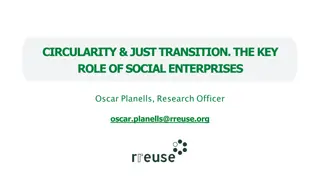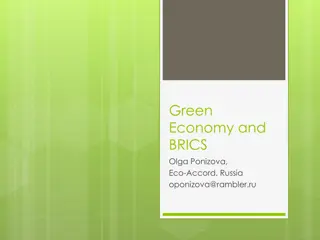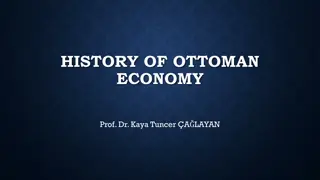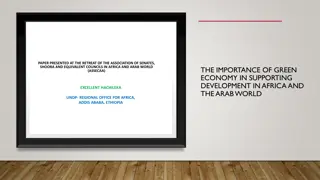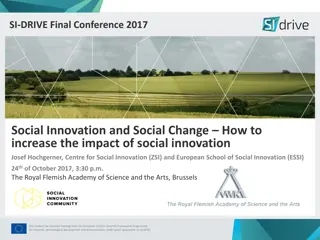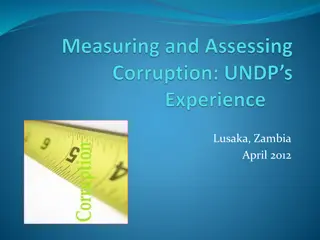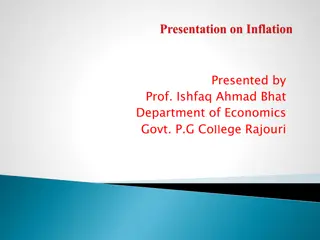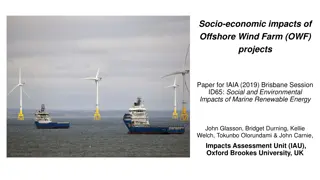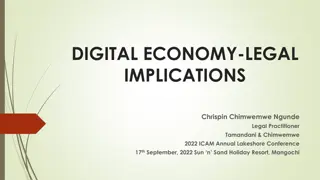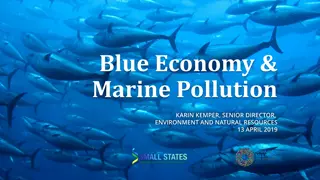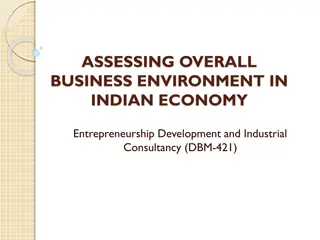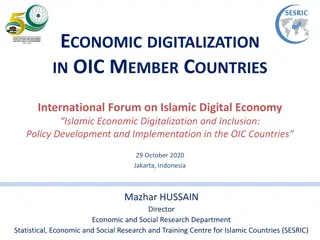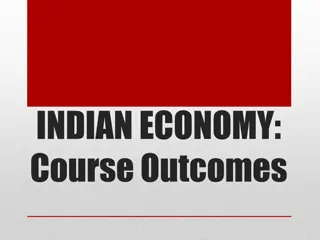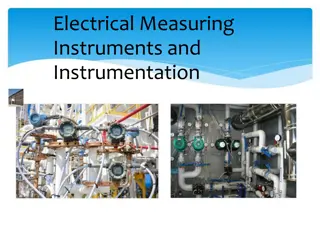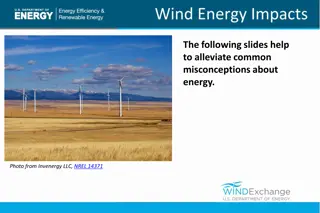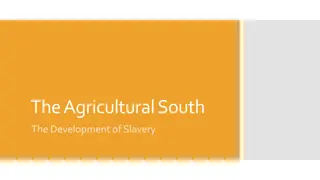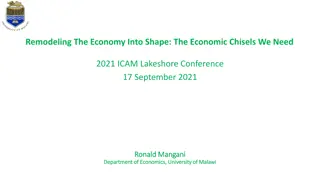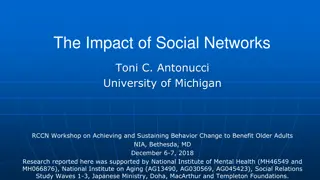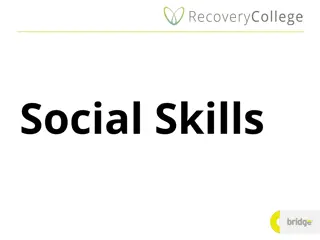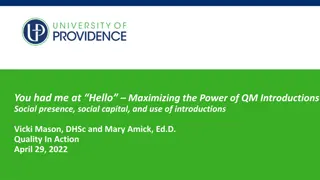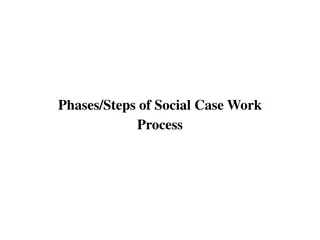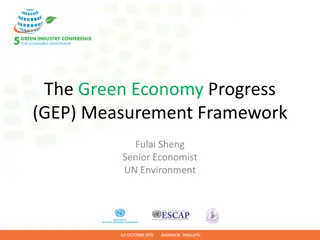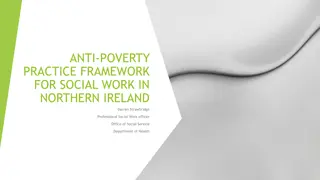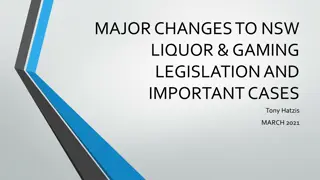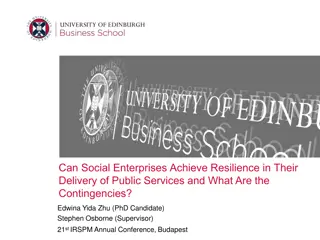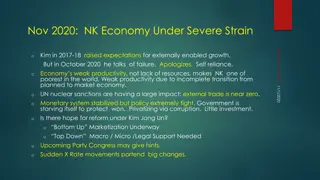Challenges in Measuring the Social Economy and its Impacts
Growing interest in measuring the Social and Solidarity Economy (SSE) has led to significant work in the past decades. However, various definitions, methodologies, and legal frameworks make it challenging to compare or aggregate data on SSE across different countries. Methodological challenges include systematic data collection, coordination between statistical offices, lack of a clear definition, and the contested meanings of SSE. Efforts have been made to address these challenges, such as reviewing the state-of-the-art and exploring opportunities for developing satellite accounts for the Third Sector and Social Economy.
Uploaded on Sep 19, 2024 | 0 Views
Download Presentation

Please find below an Image/Link to download the presentation.
The content on the website is provided AS IS for your information and personal use only. It may not be sold, licensed, or shared on other websites without obtaining consent from the author. Download presentation by click this link. If you encounter any issues during the download, it is possible that the publisher has removed the file from their server.
E N D
Presentation Transcript
Methods and indicators to measure the social economy and its impacts Marie J. Bouchard Professor, Universit du Qu bec Montr al (Canada) President, CIRIEC International Scientific Commission on Social and cooperative economy External coordinator for the UNRISD project Opportunities and challenges of statistics on SSE Expert Workshop - Brussels, 4 November 2019
Background Growing interest for measuring SSE Significant work over the past decades Various definitions and methodologies Different SSE traditions, legal and administrative frameworks Difficulty to compare or aggregate data on SSE Many countries still lack data on SSE -> What are the methodological challenges? -> How can we address them?
Context 2014: Research Working Group of the 2014 Social Economy conference in Rome (Roy 2014) - Systematic data collection : a common problem - Coordination between various statistical offices is required - Lack of a clear definition - SE has a large range of (often contested) meanings - This raises quantitative challenges
Context (cont.) 2017: The Social Economy in the European Union (CIRIEC 2008, 2012, 2017) - Clear empirical evidence of the presence of the SE in all EU countries - A similar understanding of its core characteristics - Different names, different meanings, and different subsets, depending on the country - Intersection with parent concepts: collaborative, sharing, circular economies 2019: Social Enterprise and their Ecosystems in Europe (EURICSE 2019) - Difficulty of exploring an emerging phenomenon which is not clearly defined - Lack of reliable data and statistics on social enterprises - Limits of comparability due to country specificity - Fast changing phenomenon subject to frequent policy change Different historic evolutionary process and progressive unfurling of SSEOEs Diversity of economic and political contexts in which the SSE nowadays exists.
Context (cont.) 2017 EU and OECD meeting: Towards Satellite Accounts for Third Sector and Social Economy: Challenges and Opportunities Aim: reviewing the state of the art and exploring the challenges and opportunities of developing national satellite accounts for the Third Sector and the Social Economy Converging views: - the need to test concepts and operationalizations under different social economy traditions, and legal and administrative frameworks - and to combine or complement different approaches (each of which serves as a spotlight to illuminate third sector/social enterprise entities or activities 2019 UNFTSSE UNRISD ICA CIRIEC Social Economy Europe EESC meeting: What are the methodological challenges and how can we address them?
Conceptual frameworks 1990 Defourny & Monz n : Social economy core identity = cooperatives, associations, mutual societies (+ foundations) 2003 UN Handbook on Nonprofit Institutions 2006 CIRIEC Handbook on Social Economy (Cooperatives and mutual societies) 2017 ILO Conceptual framework on cooperatives statistics 2018 UN Handbook for Satellite accounts on Nonprofit Institutions and Related Institutions and Volunteer Work 2018 ILO Guidelines for statistics concerning cooperatives
Mappings 1991 Johns Hopkins Comparative Nonprofit Sector Project 1997 Eurostat Report on the coop, mutualist and associative sector in Europe 2008, 2012 & 2017 CIRIEC Social economy in the EU 2012 EURICSE World Coop Monitor 2014 Global census on coops 2014, 2019 Wilkinson; Borzaga et al.: Social Enterprise in the EU
Various forms of SSEOEs Cooperatives & Mutual societies Nonprofit associations & Foundations Collective social enterprises Non collective social enterprises Voluntary work
Variable perimeters Collective social enterprises Non collective social enterprises Social economy Voluntary work
Variable perimeters Collective social enterprises Non collective social enterprises Social enterprise Voluntary work
Variable perimeters Collective social enterprises Non collective social enterprises NPI and related Voluntary work
Variable perimeters Collective social enterprises Non collective social enterprises Social economy Social enterprise NPI and related Voluntary work
UN Handbook 2018 Private Self-governing Non compulsory Primarily public purpose Prohibition or significant limitation of profit distribution (not based on capital invested or fees paid) and capital lock CIRIEC Manual 2006 Private and formal Autonomy of decision Democratically controlled by members- users (one person, one vote) Freedom of membership Objectives related to members needs Distribution of profits or surpluses among members not directly linked to capital contributed by each member ILO Guidelines 2019 Formally established Democratically controlled by members Voluntary and non restrictive membership To meet members common economic, social and cultural needs and aspirations Distribution of profits or surpluses among members not directly linked to capital contributed by each member
UN Handbook 2018 Private Self-governing Non compulsory Primarily public purpose Prohibition or significant limitation of profit distribution (not based on capital invested or fees paid) and capital lock CIRIEC Manual 2006 Private and formal Autonomy of decision Democratically controlled by members- users (one person, one vote) Freedom of membership Objectives related to members needs Distribution of profits or surpluses among members not directly linked to capital contributed by each member ILO Guidelines 2019 Formally established Democratically controlled by members Voluntary and non restrictive membership To meet members common economic, social and cultural needs and aspirations Distribution of profits or surpluses among members not directly linked to capital contributed by each member
social or public purpose = polysemic Narrow view Domain of activity : education, health, social services Target: children, elderly, disadvantaged people Operations: social insertion, food security, financial inclusion Financial structure: prohibited or limited surplus or profit distribution, asset lock (altruistic and limited profitability) Organisational structure: collective ownership, democratic governance (person vs share) Social, environmental and economic justice: accessibility, equitable (pre and re) distribution of revenue, long-term viability of assets to serve the common good Broad view
Methods for producing SSE statistics Standardization Aggregation Generalizability Satellite accounts: statistical tables built to align with the framework of the general national accounts while integrating the specificities of a particular object National surveys: sampling of individual units from a population and associated techniques of survey data collection Observatories: statistical observations and research that seek to understand specificities of a phenomena, often in partnership with strategic stakeholders SSE Specificity Embeddedness Coconstuction of public Policy
Main producer Sources/methodology Strengths Weaknesses Knowledge about statistics May lack specific knowledge about the observed phenomenon National statistical offices Satellite accounts Business surveys State registration offices Official databases on financial and social issues Data produced by independent institutions Professionalism and rigour in producing /analysing data Acting in accordance with quality standards No guaranty of rigor in collecting and analysing data and maintenance of quality standards May lack knowledge of specific characteristics and peculiarities of the sector Other government agency in charge of SSE components National census Enterprises compulsory reporting Good knowledge of sector Independence from sector Help the generation of harmonized and comparable data throughout the country and between countries in a certain region Quasi-governmental institution assisted by NSO National census National census Evaluation reports of members Good knowledge of the sector; Direct contact with sector Tendency to interpret the data with a positive bias Quasi-governmental institution based on the SSE movement Members and public financial and accounts reports National census Statistical profile Knowledge about SSE Good knowledge of the sector; Direct contact with sector No guaranty of the rigor in collecting, analyzing data and maintenance of quality standards, Tendency to interpret data SSE Movement
Why is it important to produce stats on SSE? Around 10% of the economy Important roles: mediator between producers and markets (agriculture); extends offer to less profitable demand segments (banking); counterbalances market power (food consumption); manages long-term assets (housing, farm machinery); reduces information asymmetries (personal services); democratizes control and direction of businesses and territories (workers cooperatives, local development associations); innovative role in new activities (recovery and recycling, renewable energy); ensures greater stability to the economic system by contributing to its smooth operation and by being able to counterbalance its fluctuations However difficult to prove without empirical evidence
Conclusion SSE more than just a policy tool or commonplace market player Dilemma: Specific definitions, tools, methods to capture the specificity / Standards to replicate and compare Arbitration: Cost / Benefits of different tools and methodologies Quantification and the different ways to quantify has a transforming effect on the definition of SSE and contributes to institutionalize it Rebound effect between the definition, measurement and public recognition of SSEHeterogeneity of SSE: issues of identification (exclusion) and classification (See: Bouchard, M.J., Rousseli re D., 2015, The Weight of the Social Economy. An International Perspective, Brussels, CIRIEC/PIE Peter Lang.)
UNTFSSE et alii 2019 meeting: Opportunities And Challenges Of Statistics On The Social And Solidarity Economy Aims: - Deepen the understanding of how statistics on SSE are presented in different parts of the world, with a focus on the methodologies and available data sets; - Examine the strengths and weaknesses of the diverse approaches to generate statistics on SSE; - Provide suggestions as to how the statistics on SSE may be better presented; - Explore innovative approaches to measure the impact of SSE on sustainable development, and - Mobilize inputs from participants regarding the Opportunities and Challenges of Statistics on the Social and Solidarity Economy project s research agenda.
Key questions for discussion Understanding of methodologies and datasets used for statistics on the SSE What are the different approaches to produce statistics on the SSE that can be found in different parts of the world? What are the available datasets, and what information do they hold about the SSE? Strengths and weaknesses of diverse approaches What are the strengths and weaknesses of the satellite account approach compared to surveys, observatories, etc.? What aspects of the SSE do these different approaches present? Suggestions as to how the statistics on SSE may be better presented What could be done for better statistics on the SSE? What steps should be taken by countries who wish to have statistics on the SSE? Explore innovative approaches to measure the impact of SSE on sustainable development. Considering the particularities of the SSE, what methodologies and indicators could be used to measure its impact on sustainable development? What recommendations could be made to statistical agencies to better represent the SSE in national statistics?


